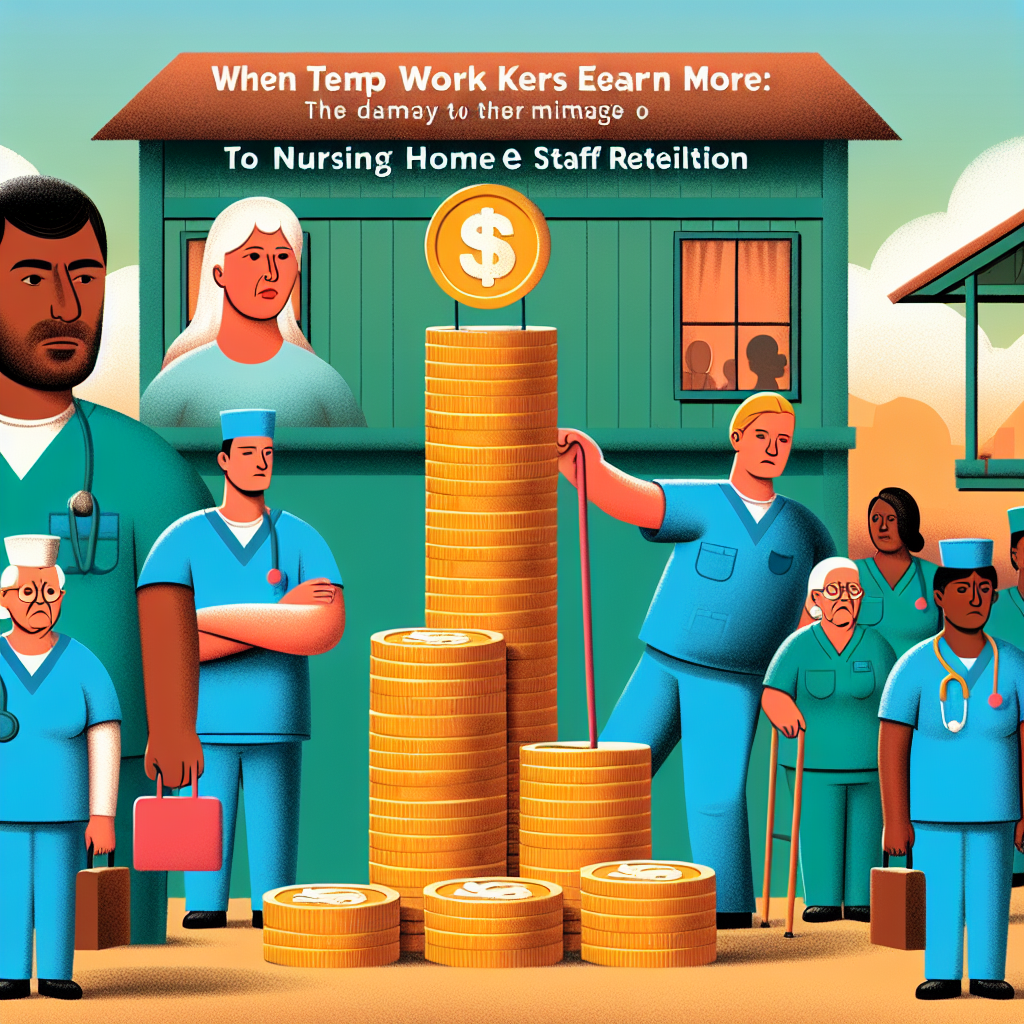**New York, NY**—As the health care industry grapples with unprecedented challenges, a growing trend threatens to undermine the stability of nursing home staff across the country. The reliance on temporary workers, often paid considerably more than full-time staff, is leading to a significant rift in the workforce, posing severe long-term consequences for staff retention and care quality in these critical facilities.
While the acute shortage of healthcare professionals has pushed many nursing homes to rely on temp agencies to fill gaps, this solution comes with its own set of problems. A recent survey by the American Health Care Association found that 58% of nursing homes are now employing temporary staff to cope with staff shortages, a stark increase from pre-pandemic levels. However, this stop-gap measure is exacerbating the turnover rate among permanent staff, who often feel undervalued when temporary workers are brought in at higher wages for similar roles.
The disparities in pay have not gone unnoticed by the permanent staff, many of whom have dedicated years to their roles, only to find themselves out-earned by temporary workers with far less commitment to the facilities and residents. “It’s disheartening,” shared a veteran nursing aide, who wished to remain anonymous. “You give your all, and then someone walks in, does the same job for a few weeks, and takes home more money. It makes you question your worth and whether it’s time to move on.”
This growing discontent among permanent staff spells trouble for nursing homes, which are already struggling to maintain quality care amidst staffing crises. High turnover rates not only disrupt the continuity of care but also impose significant financial burdens on these facilities due to the costs associated with recruiting and training new employees. Moreover, the transient nature of temp workers can erode the sense of community and stability that is vital for the well-being of nursing home residents.
Experts warn that unless the industry addresses the wage disparity and finds sustainable solutions to the staffing crisis, nursing homes risk entering a vicious cycle of high turnover, declining care quality, and increasing reliance on expensive temporary workers. “We need to value and invest in our permanent staff before it’s too late,” stated a healthcare industry analyst. “Fostering a stable, satisfied workforce is not just good for employees; it’s critical for the residents who depend on them and for the viability of the nursing home industry as a whole.”
As nursing homes navigate these challenging times, it’s clear that balancing the short-term need for staff with the long-term goal of retention and care quality will require innovative thinking, significant investment, and a renewed commitment to the professionals who form the backbone of long-term care.


